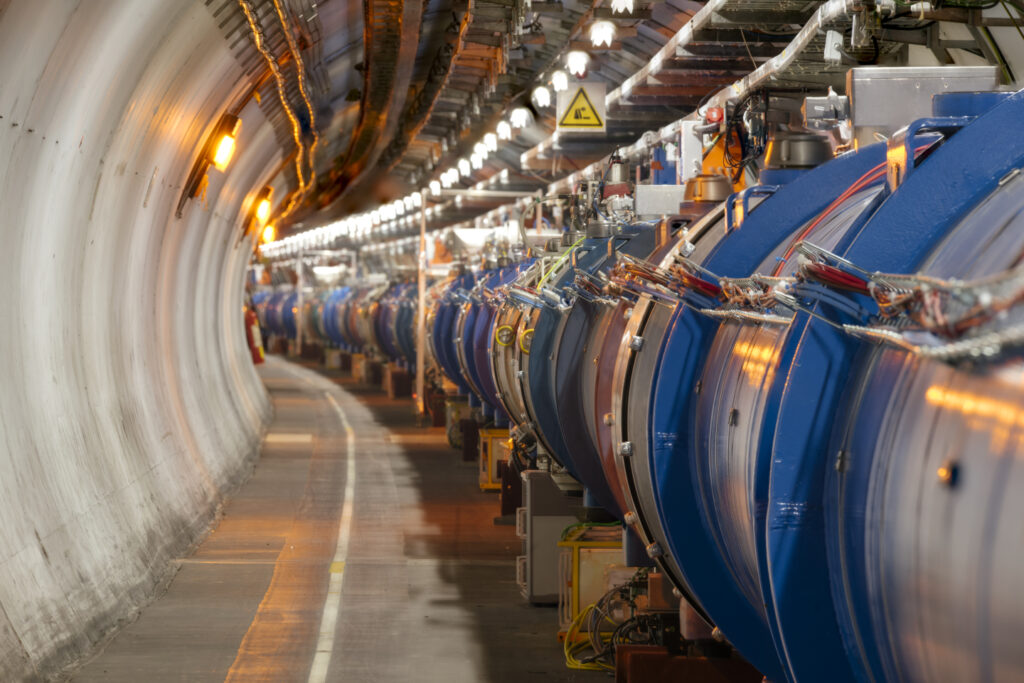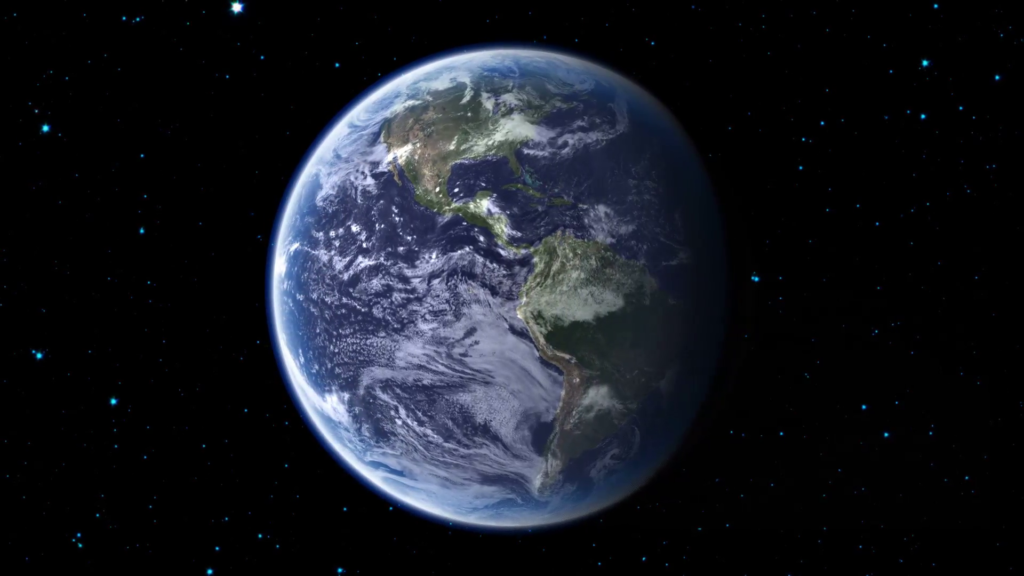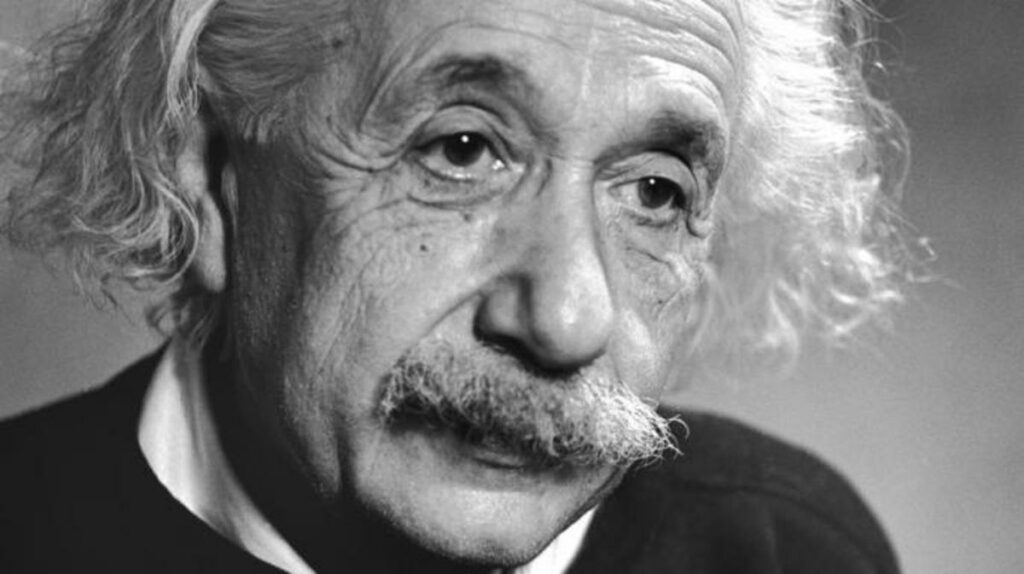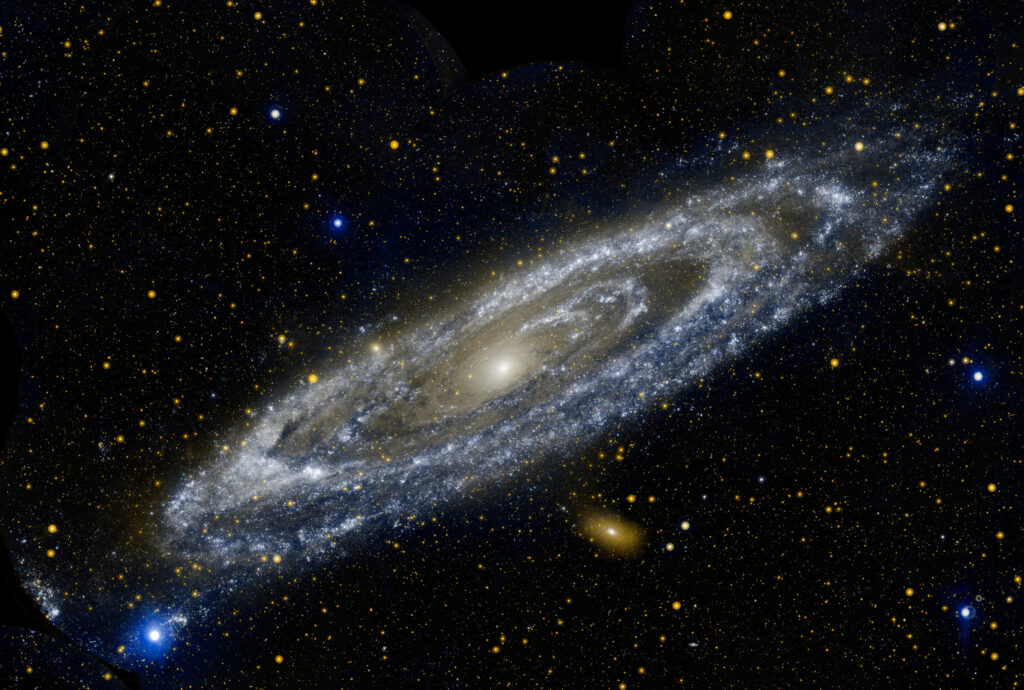Vill du läsa den här artikeln på svenska? Klicka här!

About Göran Östlin
Göran Östlin is a Professor in Astronomy at Stockholm University. He is also a member of The Royal Swedish Academy of Science. Göran’s main field is observational extragalactic astronomy and cosmology and he works at at Stockholm Observatory (AlbaNova). He has been active in the field of astronomy for more than 20 years and uses a lot of data from the Hubble Space Telescope (HST) and the Very Large Telescope (VLT) in his work.
What indicates that dark matter exists and how much is known about it?
– Actually, we don’t know much more than we knew 30-40 years ago. The first indications of dark matter came in the 1930s. It was the astronomer Fritz Zwicky who looked at how fast galaxies in a galaxy cluster were moving. When you look at how fast things move, you can calculate their mass. For example, you can calculate the sun’s mass by looking at how fast the earth circulates around the sun, and at what distance. In the same way you can decide the mass of a galaxy cluster by looking at how fast single galaxies move. You take how fast they rotate as a function of the distance from the center. That gives you the mass as a function of the distance to the center. Then you compare that with how much star light there is and make an assumption of the star’s weight.

– With this method you can see that in the center of galaxies the mass is dominated by luminous matter, i.e. everything we can see with a telescope, such as stars, gas and dust. However, the further out we go, we see that the matter density decreases which should mean that the rotation speed also decreases, but it doesn’t – it remains the same! This has been interpreted as a sign of more matter being present out there than what we can see, invisible matter which is called dark, simply because it doesn’t shine. That is basically all we know about it. Dark matter should not be confused with antimatter, which is something else. When matter and antimatter meet, they annihilate each other and release great amounts of energy, a process producing bright light. If there was antimatter in the dark matter, we would see a lot of light.
What theories are there about what dark matter really is?
– It could be “normal” things that don’t shine, like dead stars that have gone out or cold gas. We don’t think all dark matter could be that though, but just a subset. You can calculate how much helium and deuterium that was created in the Big Bang. With that result you draw the conclusion that there cannot have been so much normal matter in the early universe to explain the dark matter, as there would have been too much helium or deuterium. Instead, it is believed that most of the dark matter is of a different kind, non-baryonic matter. Baryons are normal, heavy particles that atoms consist of, like protons and neutrons.

– In particle physics there is a theory about dark matter being WIMPs (weakly interacting massive particles, Ed.). The problem is that they haven’t been found, even though they have been searched for at CERN. The theory of WIMPs was very popular a few years ago, but it no longer seems as probable. You can build hypothetical particles and make adjustments in the particle physics which can lead to the discovery of new particles, but usually you get too many or too few. Sometimes you get just the right amount and you would then think it could be dark matter, but I wouldn’t say it’s well-grounded. But hypothetical particles is something that is being looked at, for example axions.
– Something else that is being considered is if there might be something wrong with the law of gravity that we are using to conclude that dark matter exists. Instead of looking for a new type of matter that we can’t see, there are theories were the law of gravity is being adjusted and changed until it better corresponds to what we see. The problem is that many times when adjustments have been made to get results that work for a galaxy, you run into problems when you move on to a galaxy cluster. You then have to do further adjustments and add more parameters. There’s a bunch of theories like that, but even if they might be able to describe the dynamics of galaxies, they can’t really explain anything. Nevertheless, there is an experiment with satellites that hopefully will be able to answer if the law of gravity needs adjustments for very large distances. One example is a satellite called Euclid, which is being launched by ESA within the next few years to measure the matter distribution in the universe in different ways.

– There are also more exotic explanations within theoretical physics, like the one where the universe has more dimensions than those we can see and experience, but that effect the dynamics of the universe. In the law of gravity, the gravitational force and the acceleration decrease with the square of the distance. Imagine then a three dimensional world in which we only know of two dimensions. When we look at the distance A, we will only see the projected distance Axy – a vector in the two dimensional plane. But in reality, it has an additional direction in another dimension, Z. It is actually larger than what we can see. The result of this misunderstanding will be a weaker gravitational force in our calculations and we will conclude that the acceleration is decreasing, but we don’t know that we have missed to take all relevant dimensions into consideration. This became an incredibly popular idea some years ago with the string theory, and it is also a possible explanation to dark energy.
Is there dark matter here on earth?
– Almost nothing, even though it exists here as well, or at least should. But it depends on what the dark matter consists of. If it is made of particles, then it also depends on how those particles interact with other particles, what mass they have and how fast they move. We talk about cold and hot dark matter. Cold matter means that the particles are moving very slowly, while in hot matter they move fast. Neutrinos could for example be hot dark matter. The earth is an unusual dense place in the universe, much denser than a star. The matter concentration is high. We are located in a relatively dense part of our galaxy, but if

Let’s change our focus to dark energy, what is it?
–
The universe has a large-scale structure with galaxy clusters and cavities, which can be described as a spongelike network. The geometry is rather flat and the warp is very small. If you look at how much matter there is in the universe you can see that it is only about 30% of what is required for the universe to have the geometry it has. The rest, about 70%, must be something we refer to as dark energy. We no longer talk about particles, but energy fields. It’s not very intuitive at all.
Has Einstein’s cosmological constant anything to do with dark energy?
– Yes, it’s the simplest form of dark energy. He introduced it to get a static universe, since he didn’t like the fact that his model universe was expanding. You have to keep in mind that he could basically see the Milky Way and nothing more; the observable universe was very small compared to what it is today. The cosmological constant was badly seen for a long period of time, and Einstein himself described it as a big mistake. The fact of the matter is that during the 1970s and 80s there were observations supporting such a constant, but the problem was the large margin of error in the measurements back then, so the results were not trusted. But at the time of the supernovas in the end of the 1990s, very precise measurements were done and they showed that there is no other way forward than with the cosmological constant, or dark energy. That is were we still are today.

So how does dark energy work?
– Let’s imagine a box that we fill with particles. We then double the dimensions of the box which makes it eight times bigger. The amount of particles in the box are still the same, which means that the density is reduced to one eighth. With dark energy it doesn’t work like that, but instead the energy density in vacuum remains constant. It means that no matter how much you expand the box, the energy will increase to keep the energy density constant. It seems strange and you can seriously ask if it doesn’t go against fundamental laws of physics, which it actually does. But the question is if the universe has to obey the same laws that apply inside the universe. Since there’s only one universe that we can observe, we can’t test it.
– Something that acts in this way has to exist. Either energy appears or we have misinterpreted the observations. Some time ago, it was discussed if we might have misinterpreted the supernova observations. It was the relationship between the distance and the expansion rate that was investigated, to find out how fast the universe is expanding at different points in time. If there were reasons for us to not being able to see the supernovas fully, like dust being in the way, the consequence would be a weaker light and we would assume that they are located more remotely that they actually are. It’s possible but not very likely. It is now more or less established that the expansion of the universe is accelerating. It can mean that all matter gets sparser and sparser, but not the dark energy. Instead, the dark energy will get more and more important and will eventually go in all directions with an exponential speed and blow up the whole universe. And that doesn’t sound very nice, does it?

Does this mean that dark matter and dark energy counteract each other’s forces?
– The dark matter contributes with additional mass and thus additional gravity. That gives faster movements and makes the galaxies move towards each other. The Andromeda galaxy and ours are moving around each other, pulling each other. The galaxies in a galaxy cluster are pulling and moving closer to each other. But this is counteracted by a competing force, the expansion of the universe, which causes things to move further and
How close are we to find out what dark matter and dark energy are?
– It depends on who you ask, but in general it’s very hard to know if we are close or not. There’s such a wide spectrum of ideas regarding the dark matter’s properties and how it interacts with other matter. Because of this, there is no single experiment you can do to determine if dark matter exists or not. So far, science have mainly been able to rule out hypotheses rather than confirming new, good ideas. If there was a bet about if we have found dark matter within 20 years, I wouldn’t put my money on it. But these are two of the major question marks that we are trying to solve. There are different experiments, both on the ground to find dark matter, and in space to describe dark energy and measure dark matter in large scales, or deviations that can imply errors in the law of gravity. Nevertheless, we have to keep in mind that with every new answer, even more questions arise!
If you liked this article, you should probably also check these out:

